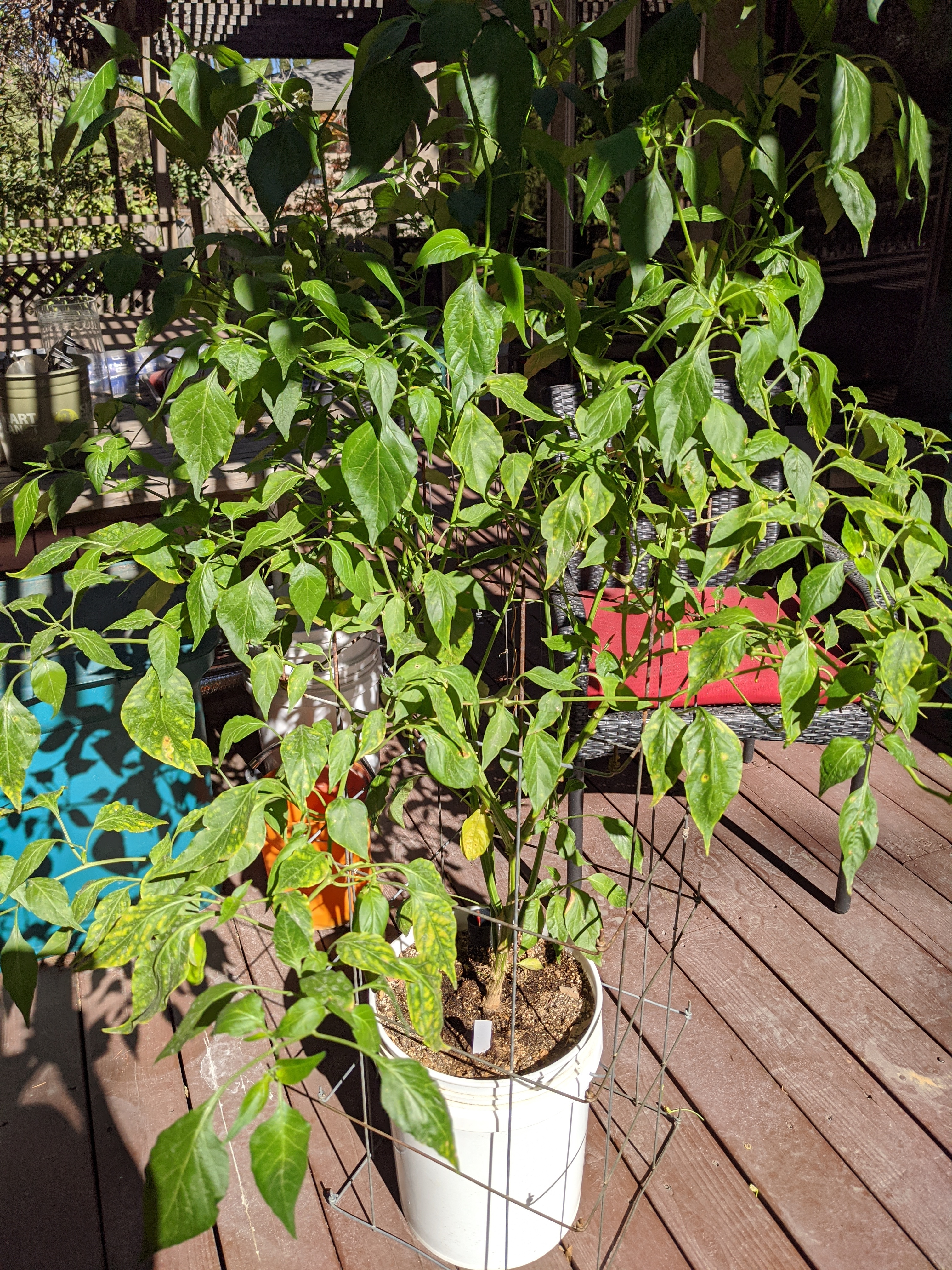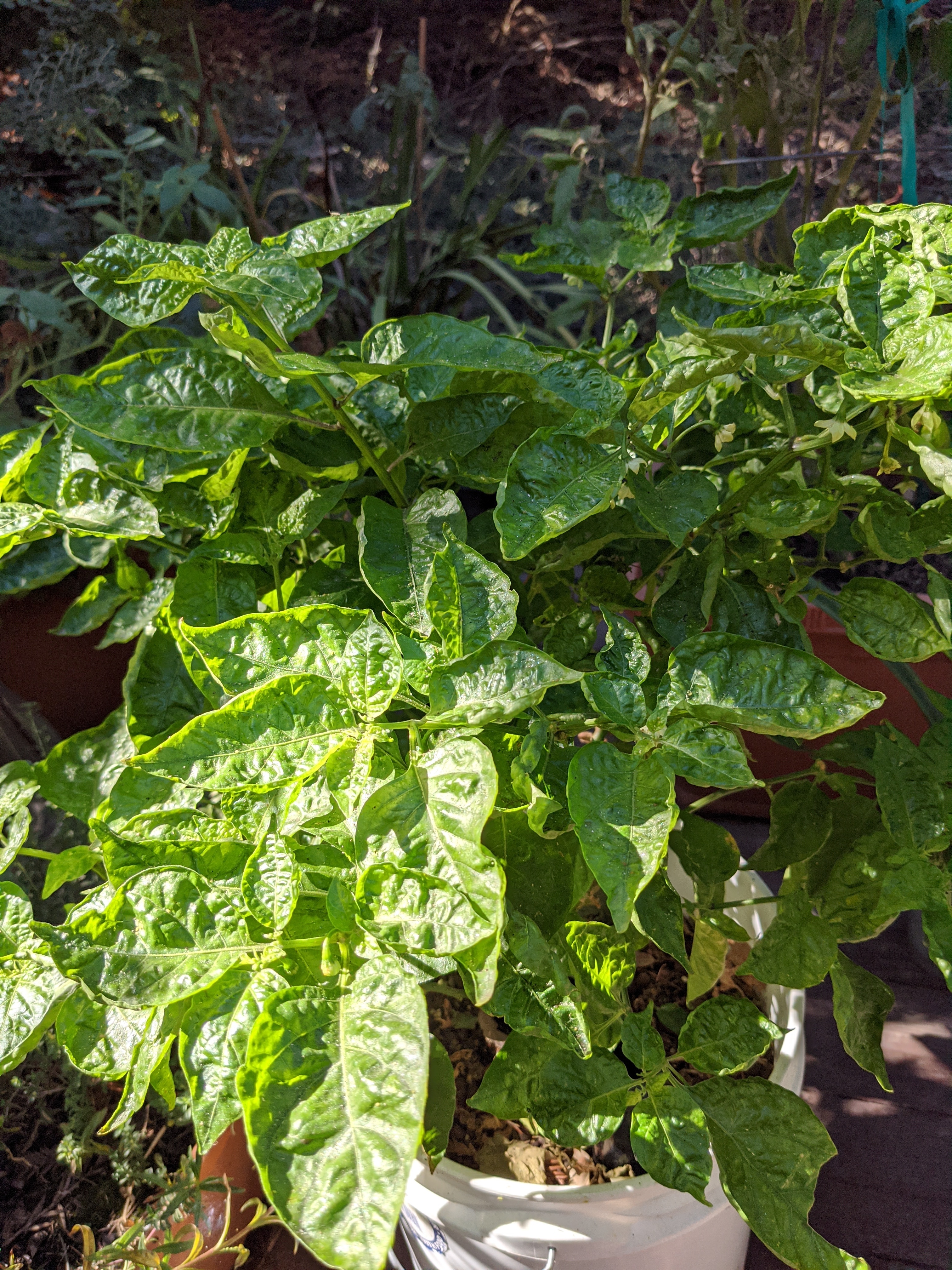Aji Amarillo, a Peruvian chili pepper, is a species lees commonly grown outside of Peru: Capsicum baccatum. Despite it’s name (amarillo=“yellow”), the long, pointed peppers are typically orange to orange-red. I’ve been growing these peppers for many years, in Virginia, USA and would like to share information to those struggling to grow this most wonderful pepper. In Peru, it is typically referred to simply as “aji”, and so when I truncate the name, you’ll know what I mean.
Before the growing details are explored, perhaps it’s good to know a bit more about what this pepper is used for and why it’s so popular. First, Aji Amarillo, in the fresh state, is unlike any pepper out there. You can control how hot it is by leaving more or less of the pale septum (“veins”) and core. Seeds are best removed, even if one wants to use the core. Seeds are gritty, sometimes bitter, and, contrary to some myths, do not add to flavor or heat. Any heat they contain is due to proximity to the “placenta”/ core, which can pack a capsaicin punch!
The flavor is clean, with a grapefruit like component. If one cuts out sections of pepper void of septa or core, it’s easier to taste this. It’s used raw, cooked or dried. While many Peruvian dishes use Aji, one of the most famous is a sauce made from pureed Aji mixed with fresh and/or feta cheeses. Hundreds of variations exist on Salsa a la Huancaina, but most of the authentic ones require Aji Amarillo, also known as “Escabeche”, named after its use in a famous group of marinated “pickled” dishes. Flavor, that’s the reason to grow it!
Sadly, fresh Aji is very scarce in the USA. There are several reasons for this. The plants need a very long growing season to size up and produce well. I start seeds, under lights, in early Feb., to plant out in May. During this time, the seedlings can get quite large and require larger pots than other peppers.
Secondly, unlike other C. baccatum species, Aji Amarillo is sensitive to high heat. At temperatures above 82.4 degrees F (28 C) the plants can go sterile, via pollen death, drop fruit, or produce low quality peppers. In much of the US, that means trying to get fruit set after summer’s heat or before it arrives, if growing in places like Florida.
The plants can get huge! There are several races of Aji Amarillo, but the tallest growing one is used primarily for dried peppers “Mirasol” in Peru. This variety is sold commercially packaged, which is where I got seed. Unfortunately, it is later, far taller, less productive than other selections. So, I don’t recommend its culture in the US or countries with a limited growing season. Even shorter growing selections, such as Escabeche grow over 7 feet (2.1 meters) tall and wide.
Currently, my plants range from about 6 feet (1.8 meters) to 7.5 feet (2.3 meters).
Strong poles and supports are necessary. The plants grow and make green peppers as weather permits. However, most of the crop is green when frost arrives in Virginia. To extend the season, I cover the plants with a hoop house, made of bent metal conduit (EMT) and greenhouse plastic.
Here, frost was possible, so the tent was closed up. During mild, sunny weather, the front and ends are opened up so sun can hit the plants without overheating. Work…sure, but it’s worth it for the flavors unattainable elsewhere!
By putting an inexpensive heater inside, a large quantity of mature peppers can be harvested at near optimal temperatures. Harvesting in September–Dec. can yield a tremendous amount of top quality peppers.
I’ll add pictures and more information as time permits. Hopefully, the above information will help troubleshoot problems encountered by those trying to grow this elusive pepper.
















